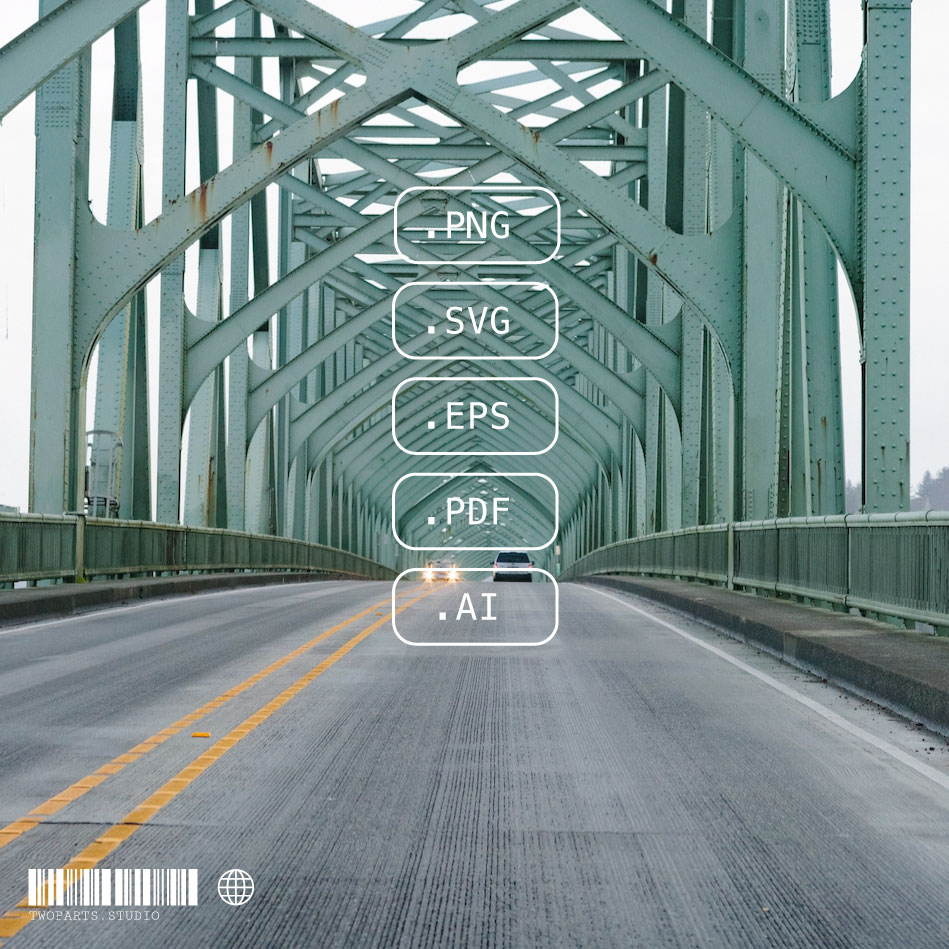8/26/23
Ok so you’ve received your logo files, there are tons of files, what is what and how do you use them? Let’s dive in.
File formats
Let’s start with the basics, all of these logo export files fall into either the vector or raster category. They might look similar, but they’re actually structured differently.
Vector Images
We’ll be making your logo as a vector format (any designer you’re working with should be doing this as well). The reason we want your logo as a vector is so that you can scale them from a tiny postage stamp to a massive billboard without losing any quality. They are always graphics, not photographs, and they utilize smooth lines and points that automatically adjust when you resize the file. This means your logo will always look sharp and crisp, no matter the size. Plus, vector images have smaller file sizes compared to raster images. This is why we strongly advise that you do not create a logo in Canva, as it is a pixel based program and won’t give you a vector export….But that’s another post.
Raster Images
When you snap a photo with a digital camera or smartphone, you’re creating a raster image. These files are widely compatible with computer systems and easy to share. Unlike vectors, raster images consist of thousands of tiny square pixels, each assigned a different color. Each pixel has a defined size and can be made smaller but not larger. If you zoom in closely on a raster image, you’ll start to see these pixels, which can result in a jagged or blurry effect if the image is enlarged too much. Raster images tend to be larger in size and more data-heavy than vectors.
Logo Exports
So now we’ll look at the file formats you’ll have in your logo export folder (if we worked on your branding). You might see various extensions like PNG, SVG, EPS, PDF and AI. Each format has its strengths and best use cases, depending on whether you’re working on print or web projects.
.PNG
PNG (Portable Network Graphic) files are high-resolution raster images that work well across different systems and web browsers. They support up to 16 million colors and can have a transparent background, which is useful when you need your logo to appear on a specific background.
.SVG
SVG (Scalable Vector Graphic) files are primarily used by web developers. They contain code and text that can be manipulated alongside other website elements. SVG files have a small size, maintain their quality at any size, and are compatible across browsers and operating systems.
.EPS
EPS (Encapsulated PostScript) files are preferred by many commercial printing vendors. They include PostScript coding data and have a high resolution suitable for printing. EPS files are vector-based and can be converted into raster formats easily.
PDF (Portable Document Format) files are widely used by designers, clients, and printers. They’re great for both print and web projects and offer various resolutions when compressed. PDFs are compatible with all modern web browsers and devices, but they don’t support transparent backgrounds.
.AI
AI (Adobe Illustrator) files are vector images created in Adobe Illustrator (where we make your logos). They’re highly flexible and can be resized without any loss in quality. AI files are great for working with other Adobe programs like Photoshop or InDesign. We will always keep the AI files on our servers to ensure we have the original logos should they every get damaged or lost.
In conclusion
So, to wrap things up, you’ll want to make sure you are using or providing the right logo for the specific project or need at hand. Vector images will offer flexibility without sacrificing quality, while raster images consist of pixels and are best suited for photographs. If you are unsure which logo file to provide while you are working with a printer or a vendor, make sure to ask them, or reach out to us to give you some additional guidance.
